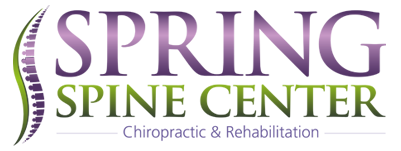Headaches are a common ailment experienced by people of all ages and backgrounds. While many associate headaches with stress, dehydration, or even certain foods, there’s a lesser-known culprit that might be causing your head pain: your neck. Yes, you read that right – headaches can stem from issues in your neck, a phenomenon known as cervicogenic headaches.
Understanding Cervicogenic Headaches:
Cervicogenic headaches are a type of headache that originates from problems in the cervical spine, which is the upper part of your spine consisting of seven vertebrae in your neck. These headaches often manifest as pain that starts in the neck and radiates upwards, leading to discomfort in the head, particularly around the base of the skull, temples, and behind the eyes. (www.qualityhotelgander.com)
Causes:
Several factors can contribute to the development of cervicogenic headaches. Common causes include:
- Poor Posture: Maintaining poor posture for extended periods, such as slouching at your desk or craning your neck while using electronic devices, can strain the muscles and joints in your neck, leading to tension and headaches.
- Neck Injuries: Trauma or injuries to the neck, such as whiplash from car accidents or sports injuries, can cause damage to the cervical spine and surrounding tissues, triggering cervicogenic headaches.
- Muscle Tension: Tightness and tension in the muscles of the neck, shoulders, and upper back can contribute to cervicogenic headaches, especially when left untreated over time.
- Degenerative Conditions: Conditions such as osteoarthritis, degenerative disc disease, or herniated discs in the cervical spine can irritate nerves and cause referred pain to the head, resulting in cervicogenic headaches.
Symptoms:
Identifying cervicogenic headaches can be challenging, as they often mimic symptoms of other types of headaches, such as migraines or tension headaches. However, some common signs that may indicate a cervicogenic origin include:
- Pain localized to one side of the head or face
- Pain that worsens with specific neck movements or positions
- Stiffness and reduced range of motion in the neck
- Pain that improves with rest or manual therapy directed at the neck
Treatment Options:
Treating cervicogenic headaches typically involves addressing the underlying issues in the neck. Here are some effective treatment options:
- Physical Therapy: A tailored physical therapy program can help improve posture, strengthen neck muscles, and increase flexibility, reducing strain on the cervical spine and alleviating headache symptoms.
- Chiropractic Care: Spinal manipulation and adjustments performed by a qualified chiropractor can help realign the vertebrae in the neck, relieve tension, and improve nerve function, providing relief from cervicogenic headaches.
- Massage Therapy: Massage techniques targeting the muscles of the neck, shoulders, and upper back can help release tension, improve circulation, and reduce pain associated with cervicogenic headaches.
- Medications: Over-the-counter pain relievers, muscle relaxants, or prescription medications may be recommended to manage pain and inflammation associated with cervicogenic headaches, especially in severe cases.
- Lifestyle Modifications: Adopting ergonomic workstations, practicing good posture, staying physically active, and managing stress levels can all contribute to preventing and reducing the frequency of cervicogenic headaches.
If you frequently experience headaches that seem to originate from your neck, it’s essential to seek evaluation and treatment from a healthcare professional experienced in managing cervicogenic headaches. By addressing the underlying issues in your neck and adopting appropriate therapies and lifestyle modifications, you can effectively manage your symptoms and reclaim your quality of life free from debilitating head pain. Remember, when it comes to headaches, the solution might just lie in your neck.
Find out more by contacting our office to schedule an appointment.
Call: 281-376-1288

